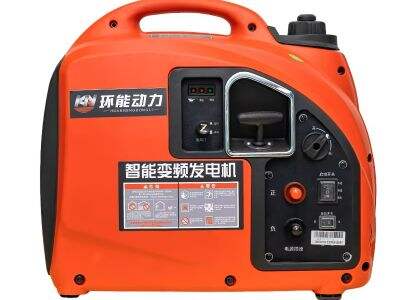Winter Is Cold, And That's Tough on Machines Like Generators
If your goal is to store that generator over the long, cold winter so it can emerge in good shape next spring and summer ready for use, then you may want to follow a few steps to protect it. The following are some suggestions on how to winterize a generator and prevent cold-start damage.
Avoiding Cold-Start Damage from Improper Generator Maintenance
One of the best ways to prevent cold-start damage to our generator is by maintaining it. For example, they need to monitor the level of oil, availability of fuel and the condition of the battery frequently. A malfunction in any of these items could cause your silent generator to be difficult to cold start.
An important part of good generator maintenance is to exercise your generator from time to time, and that includes when it's not being used. This is in order to keep the engine lubricated, as parts that dry out cause a squeaker or can become stuck to non-use. Moreover, regularly using the generator helps you detect any potential faults before they escalate into bigger issues.
Wholesale Tips for Winterizing Generators
When it comes to winterizing your generator, there are some general tips that you can apply wholesale to help protect your generator from the cold. One thing you can do: Ensure your generator is adequately insulated. This can help to prevent a freeze up and ensure that your generator starts the next time you need it.
Even though it’s insulated, it isn’t a bad idea to store your generator under cover. This can assist in keeping it from getting snow and ice laid on top of it, which can be hard on sensitive components. Finally, make sure to use a fuel stabilizer in your generator so gasoline doesn’t break down and so forth in cold weather.
By using these wholesale tips and keeping up with generator maintenance, you can save yourself from cold-start damage and a winter of trouble. After all, a well-cared-for petrol generator is a reliable generator in that time of need.
Here's What You Need to Know About Cold-Start Protection
It is important to protect your generator from cold-start damage when temperatures drop during the winter. Cold temperatures might mean that it is more challenging for generators to start, raising the potential for trouble later. Here’s a few tips to help prevent cold-start damage:
Maintain the generator: If you want to make sure your generator works when and how it should, ongoing maintenance is necessary. Be sure to inspect the oil levels, fuel filters and spark plugs on a regular basis. This will avoid any cold-weather start-up issues.
Use a block heater: A block heater can make it easier to start your generator's engine in cold temperatures, helping to keep the moving parts warm while in operation. This also may save you some money, especially if you live in an area where temperatures get dangerously cold.
Storage matters Keep your generator dry and make sure to store it in a well-ventilated area when not in use. This can help to keep the moisture out of your engine if you are operating in freezing temperatures, where the cold starts would cause damage.
With a few simple tips, you’ll be able to avoid cold-start damage to your generator and keep it running like a charm all winter long.
Essential Tips for Wholesale Buyers
For wholesale buyers interested in buying generators for your business, you should know a few vital points about winterizing your equipment:
Invest in cold weather capable generators: When you buy generators for your business, be sure to buy generators that can work specifically under cold-weather conditions. This could include anything from block heaters to a cold-weather starting aid.
Stock up on winter survival gear: Be sure to have plenty of fuel and oil on hand to keep your generators operating smoothly for the duration of winter. It’s also not a bad idea to have some spare parts on hand in case anything goes wrong unexpectedly.
Develop a Maintenance Cycle: Regularly service your generators in order to have them remain fully functional. This can help avoid cold-start damage and keep your gear in optimal condition.
Wholesale Buyers: How to Keep Your Generators Ready for the Winter Wholesale buyers can follow these few tips and be guaranteed that their generator will be prepared when needed most and no damage will have occurred due to a cold-start.
Best Practices for Winterizing Generators
And while there are some best practices for winterizing your silent diesel generator to help avoid future issues and keep it running in tip-top shape:
Change the oil and filters: Be sure to change the oil and filters in your generator before cold temperatures arrive. Which can aid the in maintaining a smooth engine and prevent damage due to cold starts.
Check the battery: Generator batteries are particularly prone to damage in cold weather, so inspect them periodically, and if they start losing their charge, consider replacing them. This will guarantee that your generator turns on when you want it.
Keep the generator covered: As long as the generator is outside, it’ll need to be kept under tarp or in a cover. This will protect it against snow, ice and other wintery elements that would cause damage.
Adopt these top tips for winterizing your generator to help avoid cold-start damage and keep your equipment up and running when you need it most.
Table of Contents
- Winter Is Cold, And That's Tough on Machines Like Generators
- Avoiding Cold-Start Damage from Improper Generator Maintenance
- Wholesale Tips for Winterizing Generators
- Here's What You Need to Know About Cold-Start Protection
- Essential Tips for Wholesale Buyers
- Best Practices for Winterizing Generators


